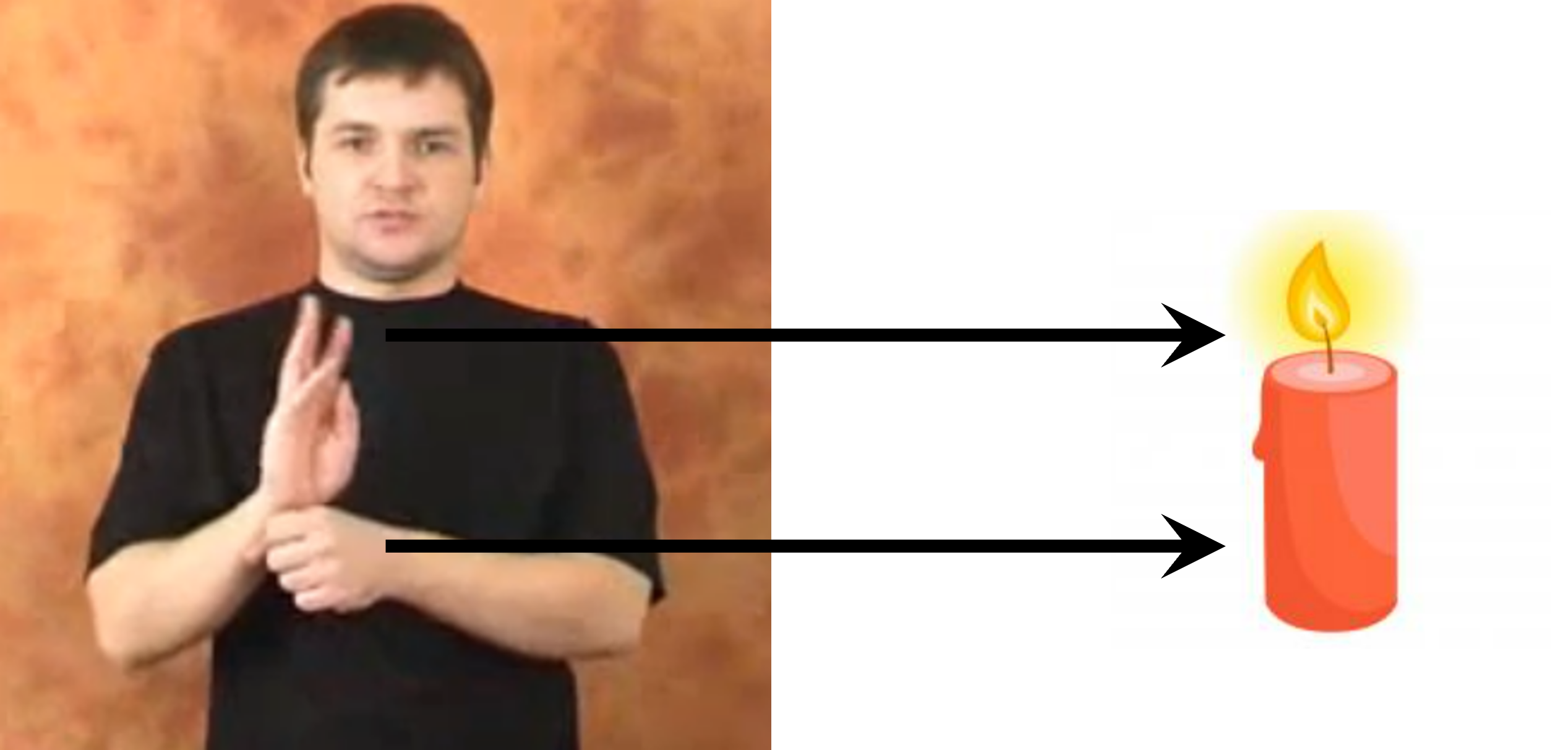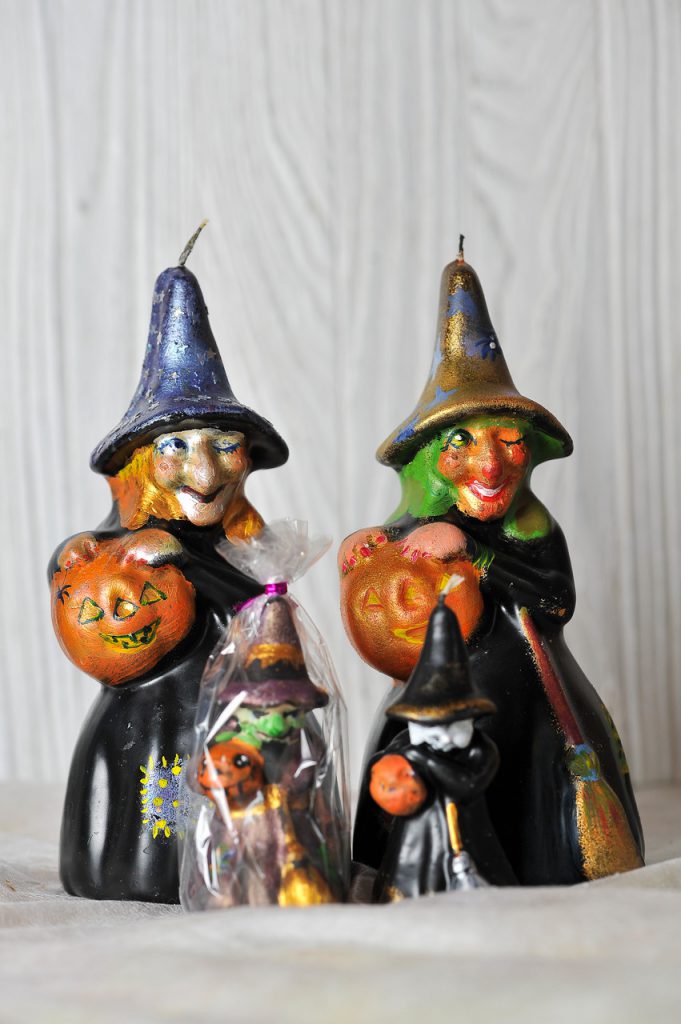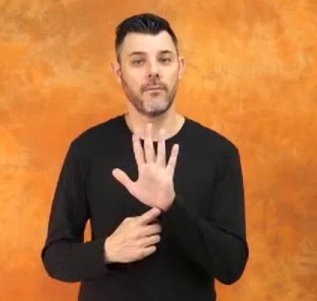Isn’t it iconic? creating signs in sign languages
If I asked you what you think of when I say the word iconic, you most probably would name David Bowie, Big Ben, or fish and chips. That is if you are not a linguist. We use this word in a different sense. It refers to elements in a language that have some sort of resemblance to the thing they refer to in the real world. The form of a word is not completely random. If you think about it, the adjective iconic is related to the noun icon, which, in its original meaning, denotes a painting that resembles a holy figure. Out of all the languages in the world, sign languages are especially famous for having a lot of iconic elements. Let’s see how it works!
Perhaps, the most often cited type of iconicity is word-level iconicity. Basically, it refers to signs that look like what they mean. Take a look at the Russian Sign Language sign CANDLE.

Here, the signer ‘‘makes a picture’’ of a candle with his hands: his left hand, bent into a fist, stands for the body of a candle, and his right hand imitates flames by slightly shaking on top of it. At first glance, the idea is very simple. You might even wonder why linguists would spend time researching this phenomenon. Here is a candle, and here is an objective and logical way to depict this candle with the hands. But the process is more complex than it appears. First, note that not all candles look the same. Some of them have very thin bodies (like birthday candles), others are flat (like tealights), and don’t forget sophisticated arty candles like the ones below in the shape of Halloween characters.

This means that the Russian Sign Language sign CANDLE doesn’t depict some kind of objective candle. Instead, it portrays the picture of a candle it considers prototypical. This already can add quite a lot of variation: we can safely assume that there would be sign languages that choose a different candle to depict. Indeed, Italian Sign Language has a taller, more elegant looking candle in mind. Notice how the signer draws its tall body in the beginning.
The sign CANDLE in Italian Sign Language.
But even if two or more languages have the same picture in mind, there are still a lot of different ways to express it. For example, in German Sign Language, you are supposed to imitate lighting a match (that would in turn light the candle).
The sign CANDLE in German Sign Language.
Whereas in Greek Sign Language, you would show blowing out a candle instead.
The sign CANDLE in Greek Sign Language.
And even if you choose to express the same aspects of the same picture, you can still do it differently. For example, Brazilian Sign Language uses the same imagery as Russian Sign Language, but it shows the flames of the candle with all five fingers instead of just three.

In order to account for this wide variability, Sarah Taub came up with a neat model of iconic signs. According to her, the creation of an iconic sign happens in three steps: (1) image selection: choosing an appropriate image; (2) schematization: choosing the important parts of the image to represent; and (3) encoding: creating the form of the sign. During the first step, one selects a prototypical image to represent; then, during the second step, one chooses what elements of this image will be expressed by the sign, and what elements will be left out. Finally, the last step is to decide how these elements will be expressed, i.e., what handshapes will be used and how they will be joined together. Sarah Taub explains this model on the example of the American Sign Language sign TREE.

Here, one starts by choosing what tree species to represent and what kind of information to encode, such as tactile images of how bark and leaves feel, auditory images of leaves rustling, or visual images of a tree shape and/or colour. In case of American Sign Language, the choice fell on the shape of a tree with a tall trunk and a leafy treetop. Then one creates a mental representation of a tree to decide what pieces of it will be encoded. American Sign Language selected the trunk of a tree, the branching treetop, and the ground in which the tree grows. And finally, one needs to choose a physical form to represent each piece. In this example, a spread hand represents the branching structure, an upright forearm represents the trunk, and a horizontal forearm and palm represent a flat surface.

Try this yourself! Can you come up with a sign for, say, a flower? Think of the flowers you know and choose one! Will it be a dandelion, a сamomile, a rose, or maybe a funny (and slightly scary) monkey orchid?

Then think of pieces you want to represent. Will it be just the flower itself? How many petals? How big are they? Do you want to encode the stem and the leaves as well? Or maybe your flower has thorns? And what about the soil? Finally, play with your hands or maybe even with your whole body and find a way to encode these pieces.
When you have created your masterpiece, go ahead and check how different sign languages did it! The best place to go is the spread-the-sign website. You can just type the word ‘flower’ and click on the flag of a language you are interested in. Of course, the difference between your representation and a sign of a sign language will be that you are free to choose from whatever parts and positions of your body you can come up with, whereas sign languages are limited by handshapes and movements that exist in the language. However, you’ll still get a good taste of iconicity!
